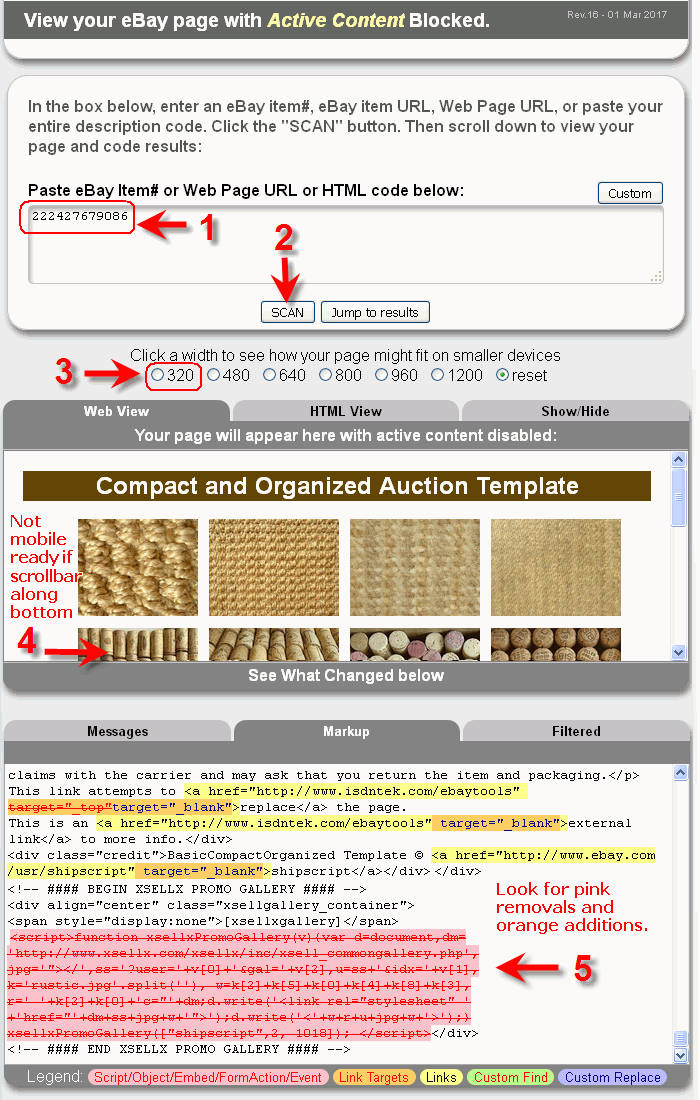Template Description Ebay
• Static Data - refers to template content that does not change from product to product. An example would be a company logo or contact information. Static content can be entered as text and formatted with the tools on the tool bars.


Create free eBay templates and eBay listings fast and easy with our eBay Listing Tools and free image hosting. You will love our high quality Free eBay Templates. A step be step guide reveals how this eBay description template generates over $34,000 every day and how you can apply this to your templates. Over 657 New Free eBay Templates. Design your own custom free eBay template for you auction listings. Editing the best HTML template is easy with the Sellercore editor. There are plenty of ugly ebay listing templates around the web. How to code and design professional ebay listings. Open your ebay description page.
It can also be entered as HTML or imported from an HTML program like DreamWeaver so you'll be able to take full control of the editor and include your brand in the product description. • Dynamic Data - refers to content that is unique to each product. Each description template is defined in HTML, like a webpage, and has placeholders in it to fill in product specific details. Placeholders in the template are replaced with product information as the listing is published.
For example, the #?TopTitle?# place holder will grab the eBay listing title of the product to which the template has been applied and include it in the description. Inserting #?LongDescription?# will grab the long description that is on the product detail page. The content will be displayed in the way they are placed on the template. • can also be used as placeholders. For example, if there is a user defined field called 'AgeRating' it can be placed in the description template as #?AGERATING?#. The actual columns can be added by the System Administrator or SellerCloud Support, and then set up in the Custom Column page under the Setting Tab. Once you have filled in the fields on the individual product properties pages, you can add it to the description template by referencing the Custom Column as a placeholder • can also be created and referenced with placeholders in the template.
• The top HTML editor is used to hold the main HTML and it has placeholders that refer to the bottom editors ( #?BundledItemsDetail?# or #?BundledItemsDetailNotMainItem?#). Set these placeholders in the place that you want to have the component info display. All formatting and branding will be configured in this template. • The bottom area is called the 'Kit Item template' and is used to repeat for each product component. In this template you would enter placeholders that refer to the individual products, like #?TopTitle?# and #?LongDescription?#.
The placeholders entered here need to be referenced in the top editor by the placeholder #?BundledItemsDetail?# or #?BundledItemsDetailNotMainItem?#. • There is also a middle editor that can be activated through the client settings. The middle editor, called the 'Kit Includes Template' is used to style the kit component squares/image gallery. It is referenced in the top editor by the tag #? Cisco Router Ios Image Gns3 Workbench there. Tortuga Pc Game. KitIncludesGallery?#. For an example of the editor in HTML. There are also some special kit related placeholders.
#?TopTitle?# eBay listing title #?LongDescription?# inserts the HTML description of the product #?ItemIncludesDescription?# #?ProductSpecificName1?# #?ProductSpecificValue1?# Use these to placeholders to populate Item Specifics in you eBay template. Name and value. #?ProductSpecifications?# Will create a table with all Item Specifics #?CSSGallery?# shows the main image with a gallery of thumbnails of the other images, showing other images when user hovers over thumbnails. There are some new client settings to control the size and position of the thumbnails. #?DescriptionDefaultImage?# Main Description image - grabs the entire image html tag #?DescriptionDefaultImageURL?# or #?ImageFileMedium?# Show the url of the main image of the product #?SupplementalImage01?# Creates a full image tag of the first product image marked supplemental #?SupplementalImage02?# #?SupplementalImageURL01?# URL of the image. Corresponds to the count of images, not their numbers.
If your images are numbered as 1,5,9 the placeholders should be #?SupplementalImageURL01?#, #?SupplementalImageURL02?#, #?SupplementalImageURL03?# #?ImageFileMediumResized?# Resized main product image, with maximum dimensions defined in client settings. If the image is rectangular with a width greater than height, it will set the width to the maximum dimension defined in client settings and then calculate the height so that the image remains to scale #?SupplementalImageResized01?# #?HostedImageURLOnlyDescription?# URL of the main image if using 3rd party hosting like Google Picassa or Flickr #?HostedImageURL01?# URL of supplemental image if using 3rd party hosting Kit related placeholders. #?KitIncludesGallery?# Images list of all child items #?KitIncludesGalleryNotMainItem?# Images list of all child items (excluding main item) #?KitIncludesNotMainItem?# Product names of all child products (excluding main item) #?BundledItemsDetail?# #?BundledItemsDetailNotMainItem?# References tags in bottom editor, excluding the main item.